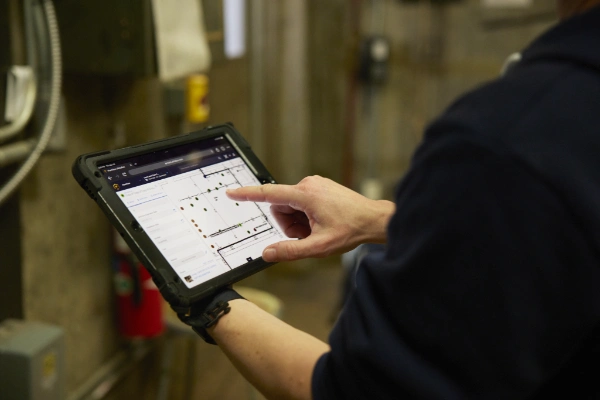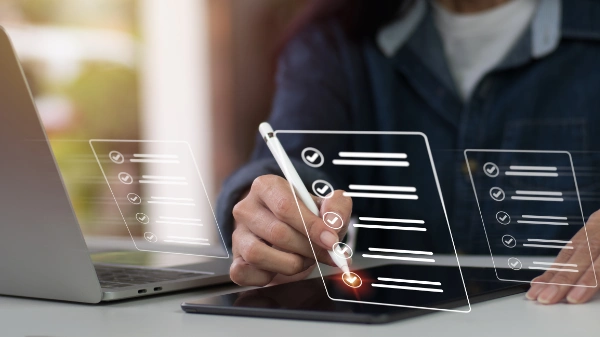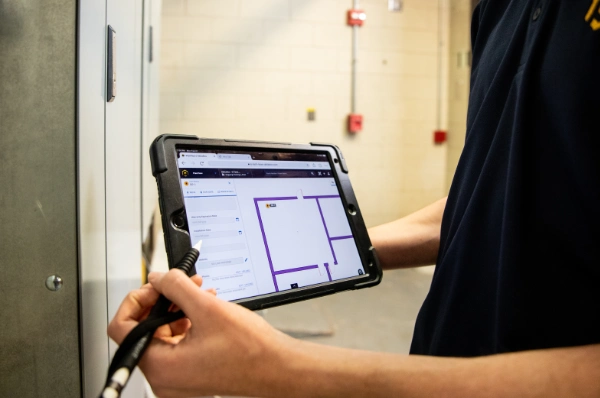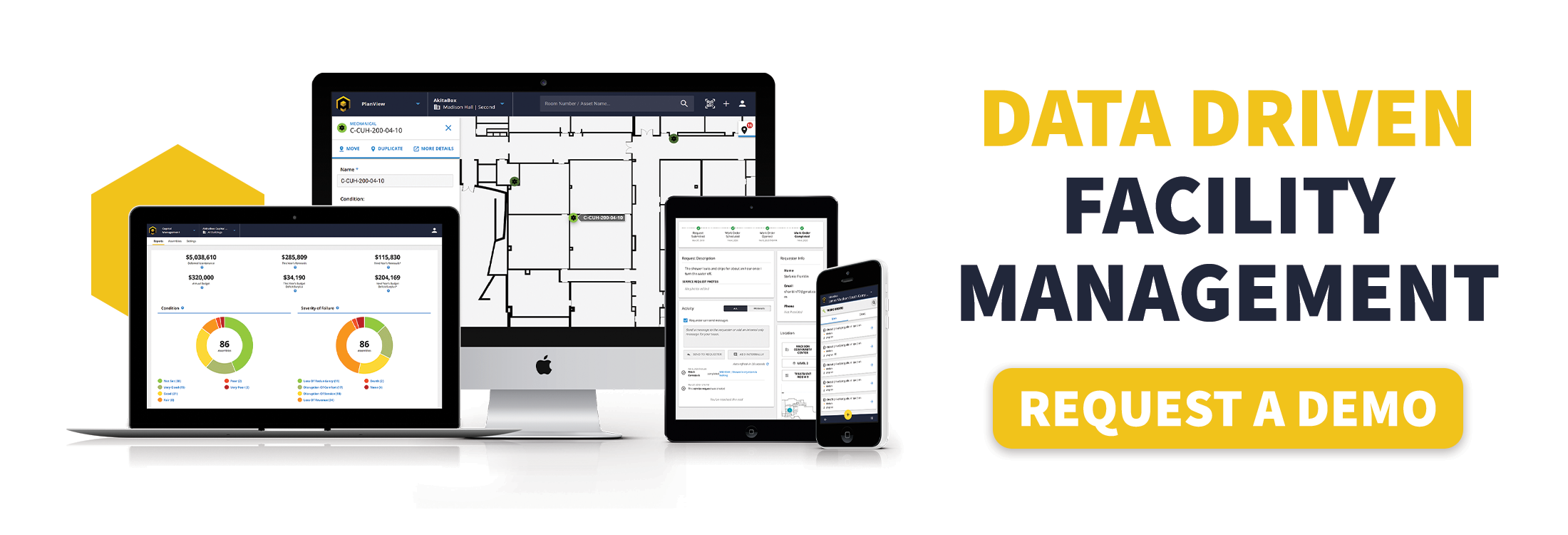Understanding Value: Why Cheaper Isn’t Always Better for Facility Software
If you only look at price when comparing facilities management (FM) software, you’re missing out on all the return you could get from a software’s features and functionality. Yes, cost will always play a role in the decision, but price shouldn’t be your only consideration when buying FM software.
So what should you be looking for in FM software? What should you base your decision on if not the price?
It’s time to take off the “cost-only blinders” and broaden your view.
What to Look for in Facilities Management Software Besides Price
Does It Benefit Other Stakeholders Beyond Just the Facilities Team?
Many people both inside and outside your organization need access to facilities information in order to make informed decisions about:
- Real estate
- Operations/maintenance
- Sustainability/energy use
- Environmental services/custodial
- Health & safety
- Property use/space management
- Finance/capital planning
- Compliance/risk mitigation

These stakeholders must be able to use and collaborate in whatever facilities management software you choose. From total square footage to facility condition indexes, your facilities data is a goldmine of information that helps just about every department.
An FM software that can support the data needs of multiple teams brings added value to your organization.
Look for software that:
- Allows multiple users to access it at the same time
- Is user friendly enough for users to understand and navigate
- Stores the different types of facilities data your organization needs
How Is It Priced?
All software is priced based on some sort of usage metric. There are a variety of usage metrics, such as subscription-based pricing, tiered pricing, or even pay-as-you-go pricing. Many FM systems on the market today are priced on a per-user basis or square-foot basis.
Each type of pricing has pros and cons. For example, per-user pricing can provide more predictable costs since you pay based on the number of users accessing the software. This can be especially beneficial if your organization has a relatively stable number of users. However, if you have fluctuating user numbers or a significant number of part-time or intermittent users, per-user pricing might result in paying for licenses that aren’t being fully utilized.
Regarding square-foot pricing, this pricing model more closely aligns with the actual use of your facilities – which can be particularly helpful if your organization’s space usage varies significantly over time. On the other hand, individual users’ needs and access levels might not be as well-addressed, potentially leading to inefficiencies in software usage.
Keep the different types of pricing in mind when evaluating potential software. Consider your team’s size, growth projections, facility types, and budget constraints so you can choose the software with the best pricing model for your organization.
Is It Map-Based?
Knowing what space you have and what assets reside in your buildings is essential to managing your facilities efficiently.

FM software that’s map-based takes your existing floor plans (or enables you to create ones if you don’t have any) and digitizes them into a BIM file format. In these now interactive floor plans, you can place pins for each of your assets. When clicked, an asset pin brings up vital information such as the asset’s O&M manual, work order history, photos, and more.
Map-based tools can sometimes be more expensive at the outset, but consider the additional value they provide. For example:
Larry has a busy schedule of maintenance tickets to complete today. On his tablet, he pulls up the map-based FM software his company uses. He can see the exact location of each asset he needs to touch. By clicking the asset pin on the floor plan, all the necessary information he needs to complete the work is at his fingertips. Now that he no longer needs to run back and forth to the plan room throughout the day, he gets more work done faster.
A water pipe has burst in a busy section of the facility. Deb can find the nearest shut-off valve quickly using her map-based FM software. She stops the water just moments after the problem is reported and saves the company millions of dollars of equipment and downtime.
After 25 years of service, Ed is retiring at the end of the year. He spends time each week going through the digital floor plans of his map-based FM software to ensure every asset he knows about is pinned to the correct location. He also adds notes to certain asset pins detailing any quirks he’s discovered over the years.
When new employee Bob starts, the FM software becomes his bible of everything he needs to know to get up to speed quickly. For every asset, he knows what it is, where it is, and what he needs to do to it – making his daily maintenance and inspections tasks much easier.
Is It An All-In-One Solution?
Choosing a software tool that does multiple FM functions may save you money in the long run. Instead of paying for individual software for work orders, asset management, capital planning, and assessments, having a single system that does it all adds value.
An all-in-one FM software brings your facilities data into one place as a single source of truth (SSOT). A SSOT eliminates data silos and removes the duplicate work of entering the same data into multiple systems. As a result, your asset management, work orders, assessments, and capital planning data feed into each other seamlessly, giving you a complete, always-current picture of what’s happening in your facilities from a single pane of glass.
Now that you know some things to look for when buying FM software, let’s talk about how to evaluate your different options.
How to Evaluate Facilities Management Software
The two biggest determining factors when choosing FM software are value and price. For each software you’re considering, calculate the ratio of value to cost. How much value will you get for the price? For every dollar you spend on a software, how many dollars will you get back in efficiency savings, time savings, and risk savings?
Say you have 3 software tools you’re looking at buying. You calculate the value-to-cost ratio for each one and find:
Software 1: $10 in savings for every dollar spent
Software 2: $20 in savings for every dollar spent
Software 3: $100 in savings for every dollar spent
Which one should you buy? The one that gives you the greatest return for every dollar spent. It’s a decision you can make regardless of the software’s price tag.

Does it matter that Software 3 is the most expensive and Software 1 is the least expensive? It shouldn’t. At the end of the day, your organization is a business. Spending 3 times more to get 10 times more output is just a plain smart business decision.
So why don’t more organizations look at it this way? First off, it’s hard to break the mentality of always choosing the lowest price. Especially considering that the bid system many companies use for purchasing software usually favors the lowest-priced seller.
In a bid process, you put out a list of features you need a software to have. A number of software companies respond with what they can offer. You review the responses and pick out the ones that say they can give you what you need. From among those, you take the one with the lowest price. That’s how the bid process is set up to function.
Secondly, if you want to choose software based on something besides price, you need to change your evaluation criteria to reflect what’s more important to you than cost. You also must get buy-in from the holders of the purse strings by showing the value a particular software will bring to your organization. Does doing that mean more work than just choosing the cheapest choice? Yes. Is it worth doing? Also yes.

Buying for value over cost can actually make you a shrewder purchaser. It encourages you to really understand what features and functionalities matter most to your organization – and the quantitative results they’ll provide. As a result, you can give those features and functionalities a greater “weight” within your overall decision criteria – and feel more confident you’re making the best choice.
If a tool doesn’t have one of the requirements you need, you can deduct that from the overall value of the tool. If that tool’s price is higher than the rest (and the other tools have this specific requirement), it doesn’t make sense to buy that software.
On the flip side, if one tool has the requirement that gives you the most savings and it’s one of the more expensive options, you should probably spend more money to get that benefit.
The AkitaBox Value
If you’re in the market for FM software, you might want to add AkitaBox to your list of contenders.
Designed to help you optimize your buildings’ performance, AkitaBox is cutting-edge FM software with a long list of advantages, including (but not limited to):
- Comprehensive, all-in-one solution
- Asset & maintenance management
- Capital planning
- Inspections
- Facility assessments
- Location-based asset mapping that shows asset relationships
- A single place to store all of your facilities data
- Easy user interface that anyone can learn
As a result, you enjoy benefits such as:
- Fully digital facilities data that replaces paper files
- Easy institutional knowledge transfer to new employees
- More efficient maintenance and asset management
- Faster response times – especially to emergencies
- More accurate, truly data-driven capital planning
- Living facilities data that gives you an up-to-the-minute view of your facility operations
- A tool to manage the entire lifecycle of your building – from construction handover, to operations, to planning for the next building

And that’s just the tip of the iceberg. Let us show you how AkitaBox could bring value to your organization and how we compare to the competition with a customized demo. Contact us today!
